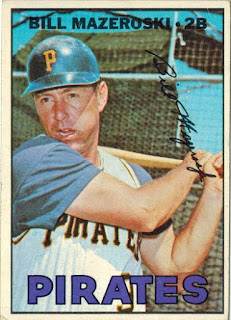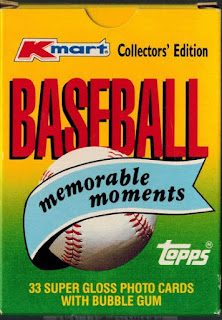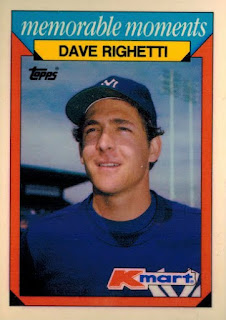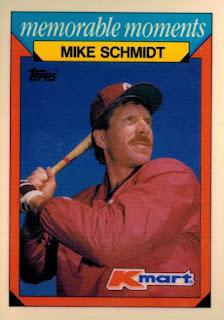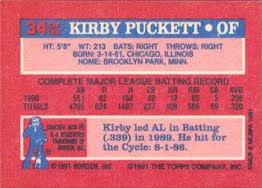I was excited to when The Sporting News released a set of cards based on the Conlon Collection, starting in 1991. I hadn't heard of Conlon, but the idea of classic photos being turned into cards sounded good to me. I bought a few packs and was disappointed, unfortunately. I hadn't heard of many of the players, and there were hundreds of cards (330 in the first series). It was going to be too difficult to collect the whole set, with too little payoff since I didn't have many players of interest to look out for while collecting. I am glad I have a few dozen of the cards, though, and I'll show a handful of them here, and a few more in a future post.
 |
| Jimmy Wilson (I suspect it is supposed to say Jimmie Wilson). |
Jimmie Wilson was a catcher with the Phillies 1923-1928 and 1934-1938, playing with the Cardinals inbetween these two stints, and with the Reds for 1939-1940. He was a two-time All-Star, including being the NL starting catcher in the first All-Star game in 1933. He won the World Series twice, once with the Cardinals and once with the Reds (it couldn't have been with the Phillies, since it took the Phils until 1980 to win their first World Series!), and was manager of the Phils and Cubs for a while.
 |
| Burleigh Grimes. |
|
 |
| Burleigh Grimes. |
|
Here we have two cards of Burleigh Grimes. The second commemorates his election to the Hall of Fame in 1964, and shows him with the Pirates in 1928. The first shows him with Brooklyn; for some reason I think of him as a Cub, and he did indeed play with the Cubs. But Brooklyn is really who he played with the most; other than Brooklyn, he only spent a couple of years with any one team. The card on the right tells the story of his spitball, that "the foreign substance" resulted from him chewing a particular kind of tree bark.
 |
| Specs Toporcer. |
|
 |
| Bill Deitrich. |
|
Here we have two similar-looking fellows, Specs Toporcer and Bill Deitrich. The "great story" on the Specs Toporcer card is that he worked at a saloon as a kid, reading game scores off a tape and writing them on a board, for 50 cents a week and some food. Toporcer played eight years in the majors, 1921-1928, all with the Cardinals. Dietrich pitched in the majors 1933-1948, achieving a career record of 108-128, pitching a no-hitter in 1937.
 |
| Home Run Baker. |
|
 |
| Jim Bottomley. |
|
Jim Bottomley won the 1928 NL MVP award. It's not the same award exactly as the modern MVP award, which started in 1931. Bottomley made the Hall of Fame in 1974. This is a great photo on his card -- if you're going to take a photo of a fake swing, you might as well look like a goofball doing it. The card on the left here is Home Run Baker of the Philadelphia A's. The Phillies make sure to acknowledge they weren't the only MLB team in Philadelphia history, and their wall of fame is the Philadelphia Baseball Wall of Fame, including a number of A's, including Baker.
 |
| Johnny Burnett. |
|
 |
| Johnny Vander Meer. |
|
Johnny Burnett played 1927-1935, for the Indians and the Browns. He was a career .284 hitter, and as the card notes, he is famous for making 9 hits in an 18-inning game. The record still stands -- no one else has even had eight, to this day. The record for hits in a 9-inning game is 7, by Wilbert Robinson and Rennie Stennett. Johnny Vander Meer is commemorated here for pitching a no-hitter in 1938, for the Reds against the Braves. It was the first of two consective no-hitters. Vander Meer pitched in the majors 1937-1951, finishing with a record of 119-121.












